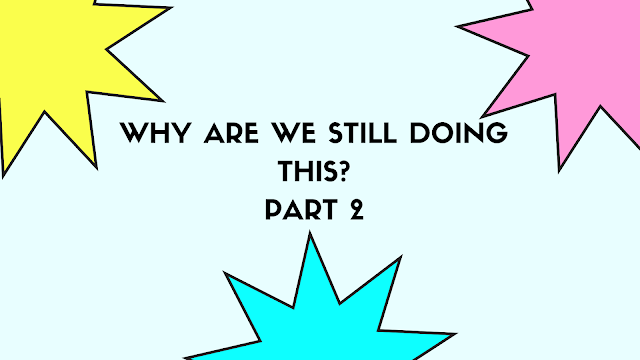Format of the bulletin
I’ve addressed this before. While in library school, I redesigned the bulletin format to better meet the information needs and other goals I could identify. What I came up with was very different than what most units use. My redesign cut down on empty space, improved access as well as achieved a plethora of other goals.
I tweaked things in later wards because the wards were different and their information needs were different. My bigger ward needed two sides to the bulletin.
Granted, it doesn’t look like the typical bulletin. However, the typical bulletin isn’t meeting our needs or achieving our information goals. Plus, it’s tedious to produce.
Has anyone else followed suit? Not really, but the Millennium isn’t here yet …
Typefaces and fonts
This sums things up:
For the uninitiated, there are two general families of fonts: serif and sans serif. Each general family of fonts has a specific use. While these rules can be broken, it is better to understand why each font family would be used in different situations.
Serif fonts, such as Times New Roman, have small elements, often referred to as flags, across most of the letters in the alphabet. Do not underestimate the importance of serif fonts. In large or long passages of text, serif fonts can make all the difference between a passage that is easy to read and a passage where your readers will strain their eyes.
Sans serif fonts, such as Arial, do not include these small connecting elements. The letters are generally much more straight or rounded. You should use sans serif fonts when you need to make a bold statement, such as headlines, titles, or subheadings.
Before my graphic design and information repackaging class in library school, I would have blown this off entirely. Not anymore.
What sort of typeface you use is important because some are more easily readable than others. How large the font size is can determine whether everyone can see it.
In general, we’re used to seeing sans serif fonts on digital media and serif fonts on printed media.
Some typefaces use up more toner/ink than others so this should be a consideration when preparing a printed bulletin.
Font point size should be between 10-14. In general, older readers need at least 11, sometimes 12. In a geriatric ward, I always went with size 12. In a more mixed ward, I went with size 11. I generally used a serif font as well because they have “flags” on them which make them easier to read.
In America, Times New Roman is the classic serif font for anything printed but Helvetica and Garamond are also good choices. I sometimes use Gil Sans.
For digital media, Arial is my standard sans serif font.
What information does a bulletin need?
Okay, so what information does a bulletin need in order to be complete? I would suggest the following:
It needs the names of everyone involved in that day’s program including who says the prayer, who plays the organ/piano, who speaks, etc. This helps us get to know people and who they are.
Contact information for some basic leadership people including the Executive Secretary (for interviews), the missionaries, the mission leader, the ward clerk and maybe some others.
Does it need the full retinue? No, it doesn’t. This harks back to the days when we didn’t have a digital website where we could find contact information. We need to carefully consider what contact information we include on the bulletin now. Most of it is redundant.
We need to know whether it is a Sunday School Sunday or a Relief Society/Priesthood Sunday. Currently, we are all left to guess.
It would also be helpful to know what the days topic/lesson/scripture it covers. This information for youth classes would also be helpful. It would also be helpful to know what rooms are being used for all these classes.
Including the building cleaning schedule and who is assigned to do it the next week would also be helpful.
Any announcement of events and activities should be present. Preferably, this would be comprehensive and inclusive for two weeks minimum. It needs to answer all the questions: who, what, when, where, why, and how.
People need comprehensive information in order to participate. Don’t alienate people by telling them there is an event but not giving them enough information to actually participate.
It may be useful to divide up static and continuing events.
Family History Center information is crucial if your building happens to have one.
You definitely need to include the contact information for the bulletin coordinator so that people will know how and to who announcements should be submitted.
Space or relevance?
We need to carefully analyze what we include in the bulletin, and really any media, related to the Church and whether or not it is truly relevant. If we are just filling up space with minutiae, people are going to discount it and pay no attention to it.
This will have implications for people ignoring stuff in the future that they shouldn’t.
Everything should be carefully analyzed, edited, and considered for whether it is necessary, appropriate, and brief. We don’t need extraneous details but we do need important ones.
If announcements and items are relevant, important and brief, people will learn to give them credence. If we continue to be casual, haphazard, and unconcerned about what we include, people will ignore them.
Why Are We Still Doing This? Bulletins, Newsletters, Flyers and More:
Continue reading at the original source →




